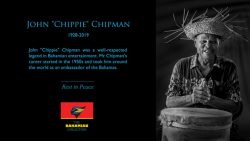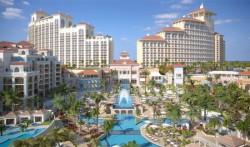Steventon, Exuma – Refuse-burning, open air dumping and unmanaged garbage dumps came to an end in Exuma on Thursday with the commissioning of a sanitary landfill.
Speaking at a ceremony in Steventon, Exuma, Minister of Health and the Environment, Dr. Marcus Bethel said that the occasion was a red-letter day for Exumians.
He listed benefits as including the elimination of “the unsightliness of garbage heaps; the pungent odour that used to engulf the air and the surrounding areas; the negative impact on the marine environment from being too close to the wetlands; the contamination of the drinking water and the possible spread of diseases from flies and rodents.”
The Health Minister said that funds were made available through a loan from the Inter-Development Bank (IDB) in October, 1999 to build 18 solid waste disposal sites, consisting of landfills and transfer stations. All 18 sites are expected to be completed by 2006 throughout, The Bahamas, he told persons gathered for the ceremony.
Prior to his taking office in 2002, Dr Bethel said, four sites were completed on the islands of New Providence, San Salvador, North Eleuthera and Bimini. Since then, he said, two other plants have been commissioned, one in North Andros and the present one.
More to come
“Early in 2005, we expect to commence construction and completion of landfill sites in Great Abaco and East Grand Bahama, followed closely by others that will be built in Cat Island, South Eleuthera, South and Central Andros, Inagua and North and South Long Island,” Dr. Bethel said.
He noted that the Exuma landfill has an elevation of 36 to 50 feet above sea level, and is an “above ground modified landfill. It has been sized to accommodate a large quantity of garbage, some 3,500 tons of garbage per year, of both residential, construction, and bulky solid waste.”
The life span of the landfill site is expected to be about 20 years.
Closures
Previously-used dump sites in Steventon, George Town and Barreterre will be closed, as the sites will be restored and used for other purposes, the residents were informed. “Also, the previous method of disposing of solid waste where garbage was dumped, burned and the burned material pushed aside to make more room for more garbage, will also be discontinued,” Dr Bethel said.
Advantages
Explaining the benefits of landfills as compared to dumpsites, Dr Bethel said, “Dumpsites are simply a piece of land where waste materials are discarded or thrown.”
On the other hand, he said, “A landfill is a carefully engineered, impermeable sunken area into which solid wastes are put and covered with fill. The ultimate aim is to avoid any hydraulic or water-related connection between the wastes and the surrounding environment, particularly our ground water.”
He said that a landfill consists of four critical parts, namely: “a bottomliner, a leachate or garbage juice collection system, a cover and the natural hydrogeologic setting. This setting helps to minimise the possibility of wastes escaping into the ground water beneath the landfill.
Elaborating further, he said, “A landfill site protects the water table, has a proper drainage system, eliminates flies and odours with the use of a covering, eliminates burning and therefore air pollution and is carefully managed by trained personnel.”
‘Good-bye to all that’
Member of Parliament for Exuma and the Cays, Anthony Moss, said, “We’ve come to say good bye to the days of dumping at the city dump and burning on the side streets.”
He noted that revious dumps were in the settlements of George Town and Steventon, where in some cases the wind blew odours into the capital from that area. He said that some persons might perhaps miss burning their garbage but the new landfill was the way forward.
IDB representative Jorge Torres, giving brief remarks, noted that the landfill programme involved creating disposal facilities in New Providence and 10 in the Family Islands, including hazardous waste disposal.
The improved system was designed to be “efficient, financially sustainable and enhance the public health and protect the environment in The Bahamas,” he said.
Mr. Torres called upon residents and the island’s Local Government body to collaborate and co-operate in “ensuring the sustainability of our health, environment, biodiversity and economy.”
The land for the site was acquired through the Exuma Commonage Association.
Jimenita Swain, The Bahama Journal



